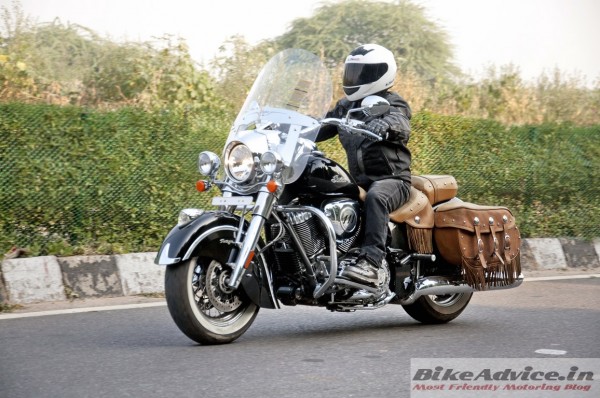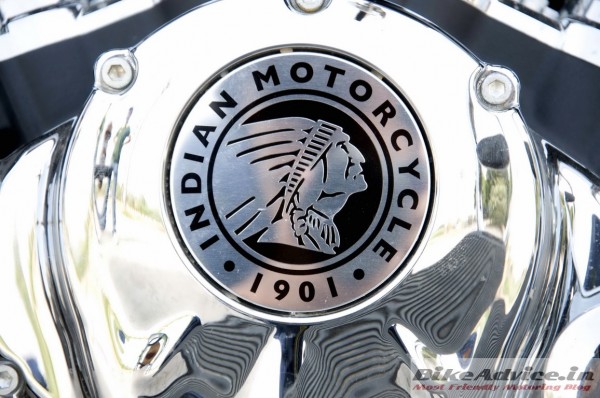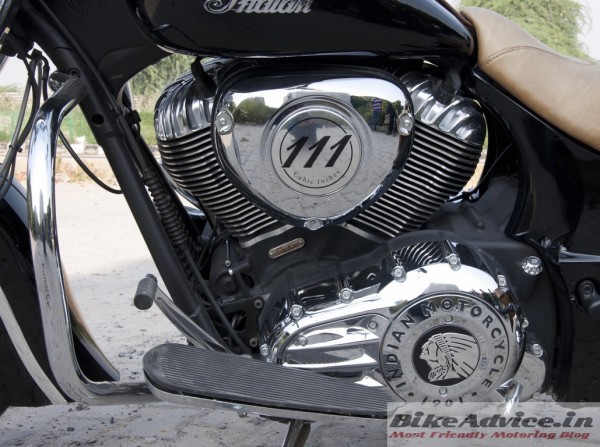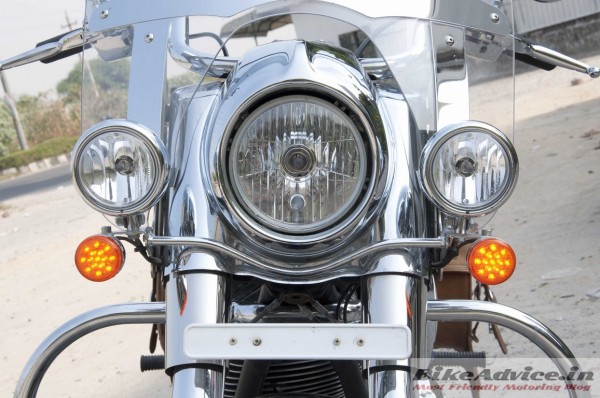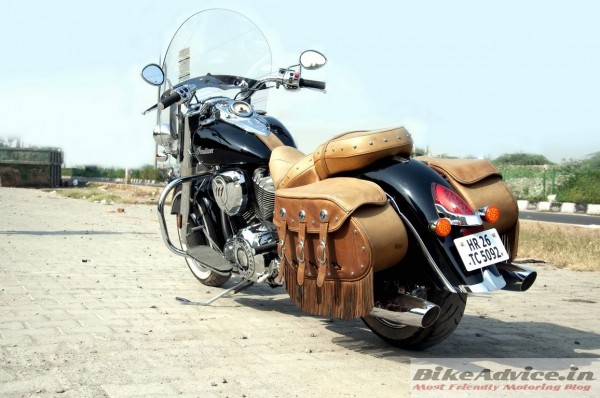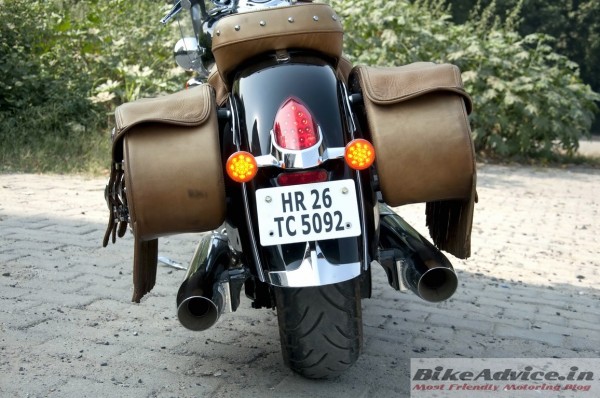- Photos: Anjum Chisti
- Text & tester: Syed Shiraz
I have always found the act of seemingly well-informed Homo Sapiens confidently relaying incorrect information to be quite amusing. Whatever the question may be – an actor’s first movie or the discoverer of a country – chances are that most answers would either be way off the mark or lack the correct chronological order of events/happenings.
Gear Check:
- Jacket: Cramster Eclipse
- Gloves: Cramster TRG2 Gloves
- Helmet: LS2 FF351 (Buy LS2 Helmets from Amazon)
For example, if you ask someone about the inventor of the automobile, most will still blurt ‘Henry Ford’ or just simply Ford! Try telling them that it was a chap with the last name ‘Benz’ who had something to do with it and chances are that you’ll just end up with one less arrogant acquaintance in your life… Unwillingness to dig deeper might be one of the reasons for such incorrigibility, but in a region where a modified bullet is easily (and loosely) referred to as a Harley-Davidson by masses, there comes a time when you actually stop confronting people that H-D was not the first production motorcycle in the world.
Indian Motorcycle History
Well, neither was Indian and that’s a topic for some other day, however, the fact is that the company was certainly founded a couple of years before H-D, and the first American motorcycle was indeed an Indian – and this was in 1901. Heck, Indian even set a world motorcycle speed record of 56 miles per hour (90.12 km/h) in 1903! Absolutely fitting that, as the company was started by two former bicycle racers, George M. Hendee and Carl Oscar Hedstrom.
In fact, it was first known as Hendee Manufacturing Company when George founded it in 1897 as a bicycle manufacturing company, and later on as ‘Hendee and Hedstrom’ when Carl joined it in 1900. Though George had been using the ‘Indian’ name for his bicycles, the company came to be known as the ‘Indian Motorcycle Company’ in 1920s; what’s ironic is that both George and Carl had left the company by then.
Anyway, Indian had become the largest motorcycle manufacturer in the world in 1910 and also took the top three places in the 1911 Isle of Man Tourist Trophy. Even before and after accomplishing this feat the company had had several wins and records to in other races and endurance runs to its credit, and everything was hunky dory till about the end of the Second World War, post which financial and other troubles saw the company eventually shutting shop in 1953.
Motorcycle fans the world over could never forget the Indian Chief and Scout motorcycles, and that caught the fancy of various investors and firms. Several attempts were made to resurrect the company but none of those parent organisations had the necessary vision and/or the capital to bring the marque to its former glory.
The best effort, before the current owner’s (obviously), was the most recent one, relatively, in 2004 by Stephen Julius and Stephen Hesse, owners of Stellican Ltd., a London-based investment house. However, despite comprehensively re-engineering the Chief, received from the Gilroy factory, over a period of almost five years, the finished product was far from being a challenger to Harley-Davidson. Well, that’s not the case anymore…
Polaris Industries, a multi-billion-dollar conglomerate, took over Indian from the two Steves in 2011 and went silent for two years… And then it happened – an all-new Indian Chief was unveiled at the Sturgis Motorcycle Rally in 2013. Not only was it really an all-new Indian Chief to have been produced in 60 years, it was much cheaper than the Gilroy Indian Chiefs despite being miles ahead of them technologically! Moreover, three variants of the bike were displayed: Chief Classic, Chief Vintage, and Chieftain. It’s the Vintage that is closest in style to the Indian Chief of yore and that is the one I got to spend some quality time with this past weekend.
Design, Fit & Finish, and Swtichgear
If you’ve just read the last statement of the paragraph above you would know that the Chief Vintage is the closest you can get to the old Chief. In design terms, that is. Mechanically, it is a different story altogether, but more on that in a wee bit. Few motorcycles come to my mind that induce nostalgia such intensively and make you live in it too, and this Indian is up there with the best in this aspect.
It’s as imposing and intimidating as the old Chief, but a lot more beautiful. I mean, just look at it! How could something so big and excessive turn out to be so hypnotically pretty! The oh-so-gorgeous fuel tank is perfectly complemented by sumptuous seats and steel valanced fenders that partially hide the 60-spoke fat rims, while the leather saddle bags look finely detailed as well. In fact, fit and finish of the whole bike is nothing short of exemplary.
A large chrome bezel on the tank houses an analogue (electronic of course) speedometer, an analogue fuel gauge, and a power button. The speedo roundel also contains an LCD screen that displays the chosen gear, revs, fuel range, time, etc. You may be forgiven to think that there are two fuel filler caps on either side of the instrument console on the tank but only the one on the right hand side can be opened; the other is present only for aesthetic purposes.
The engine looks as if the engineer also mentions a degree in ‘Fine Arts’ in his Curriculum Vitae. Plus, it’s the intricate details that keep spiking your happiness quotient as and when you make sudden discoveries while admiring the motorcycle. For example, the word ‘Indian’, in the official script, has been etched onto many parts such as on the instrument cluster, brake-fluid-reservoir covers, handlebar grips, etc., and the Indian logo has also been embossed or engraved at quite a few places. My favourite art-piece has to be that ‘War Bonnet’ on the front fender that glows too!
Let me also tell you that it is bigger (and even more beautiful) in metal than it appears to be in the pictures. Just to give you a perspective, the RE Thunderbird 500 has a 1,350 mm wheelbase and measures 2,060 mm overall in length. Whereas, the Indian is 2,634 mm long while its two axles have a distance of 1729.7 mm between them. Also, the windscreen and that big headlight flanked by auxiliary lamps and LED turn indicators add visual (and real) mass, with grace though, to the front while the wide handlebars, valanced fenders, leather saddlebags, and those mile-long silencers heighten the overall sense of largeness of this gargantuan motorcycle.
Engine, gearbox and performance
Swing a leg over, grab the handlebars, and take the bike off its side-stand. That’s easier said than done on a motorcycle that weighs around 400 kilos fully-fuelled. Anyway, once the bike is vertical, with the key fob in your pocket, you first press the round power button on the dash, flip the engine kill switch to turn on the ignition, and then press the starter button. What happens next is pure HEAVEN.
The whine of the starter motor is followed by that first explosion which is like that best part of your favorite song that you want to listen to again and again (so, my switching off the engine at almost every traffic signal was not for environmental reasons, but for aural pleasures). Of course, the engine and exhaust sound is music at all revs and a sort of firsts is that your neighbours won’t hate you for it; in fact, they might want to wake up to that pleasant rumble!
Yes, it’s not loud at idle but the sublime instrumental soundtrack will act as a mood elevator rather than causing heart-attacks in your neighbourhood. The sound doesn’t punch you in the chest and you’ll love it for that, provided, of course, you are the kind who understands the difference between high notes and cacophony.
Once you have had your fill of the perfect bass and treble combo with the engine idling between 700 to 800 rpm, you pull in the clutch lever and press down the toe-only shifter (as opposed to toe-and-heel) and a ‘thunk’ tells you that the shifter dogs have chosen the first gear. You want to do the initial run sedately and understand the beast’s behaviour first, so you roll it like a typical cruiser and go through the gears like a gentleman.
The six-speed gearbox obeys like a well-mannered Rottweiler and a firm foot will never see a false neutral, while finding it when required is easier than finding a moron on a road. So, you’ve reached the first intersection and have become somewhat acquainted with the bike’s language by now, it’s time to check if on green it will get away from the rest of the traffic or you’ll just end up embarrassing yourself. Those all around you would expect you to take your time in setting off slowly like a locomotive, but their jaws would hit their stomachs (or steering wheels/bike tanks, etc.) upon the sight of a bulldozer-on-two-wheels squatting its rear and vanishing into the distance! That’s 139 Nm of torque at play here people.
That torque and the almost perfectly spaced ratios make this an untiring bike to ride sanely as well. Cruising at 80 km/h in 6th gear with the 1,811 cc V-twin ticking over at just 1,800 rpm feels cream-smooth and the engine won’t complain if you bring the speed down to even 50 km/h and gas it up again without downshifting – no snatching or lugging drama, just a linear surge of power. However, if you do downshift, the bike will shoot forward with such alacrity that it becomes addictive, and it’s during such sprints that the Chief is naturally at its loudest.
Pesky auto-rickshaws and other riff-raff just don’t dare come in your way. Interestingly, like Harley, even Indian does not publish the bikes’ horsepower figures, and that’s okay, to be honest, as it’s the twisting force that matters when it comes to cruisers and not top speed. Still, with the front screen offering superb wind protection, I managed to touch a speedo-indicated 170 km/h before I ran out of road. But you don’t do those speeds on cruisers – at least in India you won’t!
Even in the Americas, these are best enjoyed at 130-140 km/h on arrow straight highways, and here you will be lucky to cruise at 100 km/h plus for even 20 minutes, and that too if roads, cows, and baboons (the talking variety) permit you to. Therefore, I didn’t (want to) test the cruise control feature, but it’s there for the Taj Expressway…
Talking about continuous riding or touring, I must mention that the ride quality of the Chief Vintage is wonderful. It comes with 46 mm cartridge front forks with dual rate springs, and a 94 mm monoshock at the rear. The suspension is tuned a tad towards the firmer side but the ride still remains great. That generous and well-sculpted leather seat is supremely comfortable too and you won’t get tired of riding this machine for hours at end, provided you don’t have to ride in crawling city traffic as the steering is on the heavier side at single digit speeds.
However, that heaviness, together with the aforementioned suspension set-up, translates to rock solid stability on highways. That stability is actually the best that I have experienced yet and it should be, given that it’s longer, wider, and heavier than every Harley out there. But the XXXL dimensions do not mean that it can’t dance – the Chief will change directions in a manner that will have the onlookers swear in disbelief, while it’s extremely poised on long sweeping corners as well. You can lean this one far more than most others in its class and a ground clearance of 142 mm certainly helps here. The clearance also means that you can take the worst-constructed speed-breakers head on rather than approaching the ‘obstacle’ at an angle.
All Chiefs come with ABS (Anti-lock Braking System) as a standard fitment and 16-inch rims shod with Dunlop 130/90 and 180/65 rubber on front and rear, respectively. The tyres offer insane levels of grip and the 300 mm rear disc provides a nice bite and a great degree of feel too. Surprisingly, the same cannot be said about the front anchor set up, which, despite boasting of two 300 mm discs, lacked in both feel and bite.
Might be a case with my test bike only but the front brakes were certainly underwhelming. Still, the bike stops like you want it to and the best part is that the ABS is not super-intrusive. Despite several hard attempts to lock the tyres in a straight line, not once did the ABS give me a hand or a foot-massage. Yes, not even once! Good rubber can prevent a lot of things from happening…
Fuel Efficiency
Picking the Chief Vintage from the Buddh International Circuit allowed me to immediately sample the bike on straight and smooth expressway roads, while the next day saw the Chief carving its way out through everything that Delhi traffic normally has to offer. The ‘average’ fuel consumption stood at around 15 km/l and this is quite a respectable figure for such a machine in our traffic and road situations. A 20.8-litre fuel tank capacity should get you around 300 kilometers before needing another tankful of 91 Octane.
Verdict
Irrespective of the segment and class, a motorcycle is primarily judged on two basic parameters – how it goes and how it stops. The Indian Chief Vintage does both these things better than its arch rival, which in itself is a commendable feat especially considering the time taken by the parent company to develop it from the ground up. Moreover, when you talk about ride & handling, saddle comfort, technology & refinement, and build quality, the Chief Vintage comes second to none in the segment. And that V-twin sounds glorious too!
But for majority of buyers in India, a purchase in this class would be majorly decided by the bike’s design and style. Here, the Indian Chief Vintage wins hands down! I have already discussed the fine details of its form earlier in this story but let me also add that this motorcycle’s road presence commands respect normally reserved for cars costing above 2-3 crores! Suddenly, the bike’s INR 29.5 lakh (ex-showroom, Delhi) cost seems like leftover change in comparison…
Almost everyone would want to click a picture of the Indian; the fast-driven cars will slow down to grab an eyeful and slower vehicles will rev the hell out of their engines just to catch a glimpse of the big & beautiful. The amount of thumbs-up signs, cheer-waves, and all the other friendly gestures that I received while riding the Indian affirm the acceptance of such machines in our country at a time when big bikes are unfortunately being seen by a bunch of losers as a menace to our society. Of course, I normally wouldn’t care about public-perception of my machine but it’s always nice to know that your motorcycle, along with being a source of joy for self, can spread happiness around in equal measure too.
The Indian Chief Vintage is one of the best anti-depressants ever made, period. I just hope that, sooner or later, Polaris India makes the drug a little more accessible to people by assembling the bike here. Until then, I’ll continue to bug Mr. Pankaj Dubey, MD, Polaris India, to get his sales & marketing team to devise unheard of finance schemes yet for the already deliciously priced Scout.

